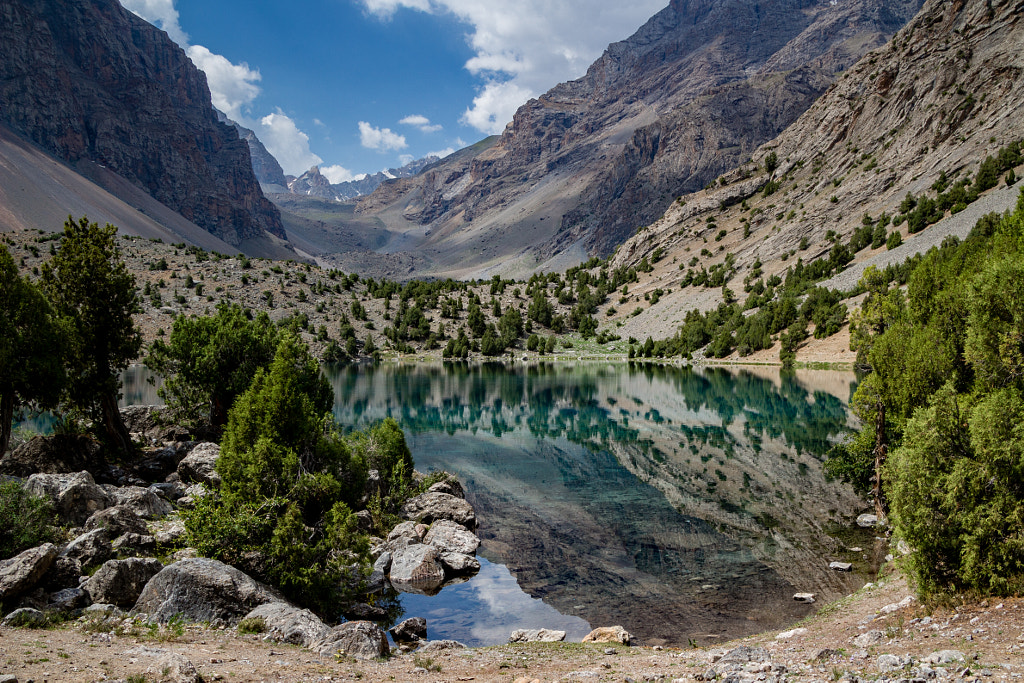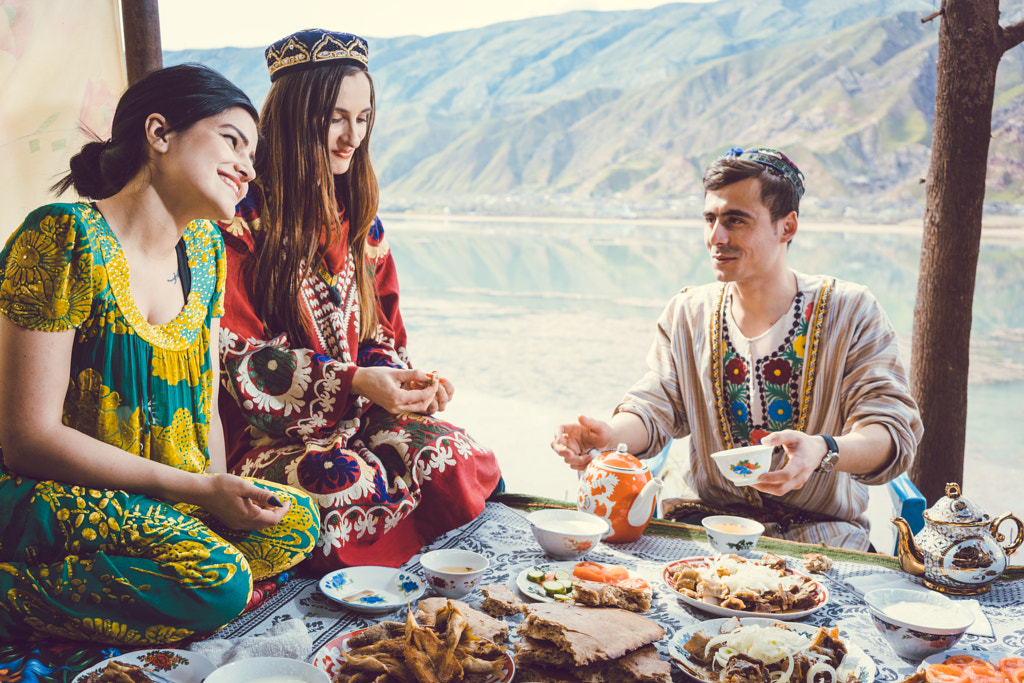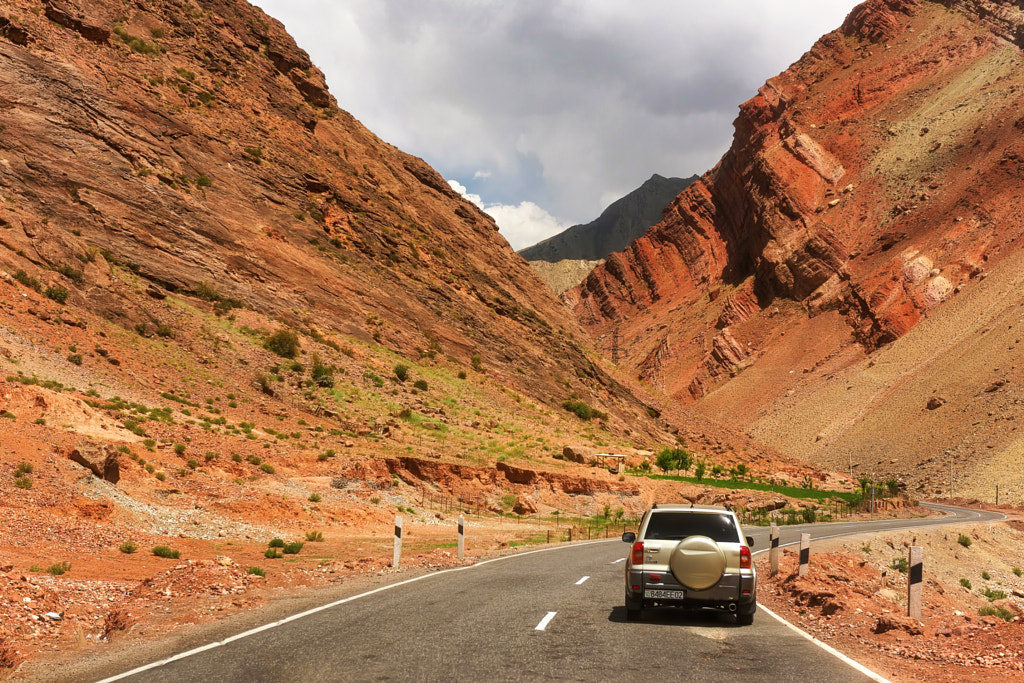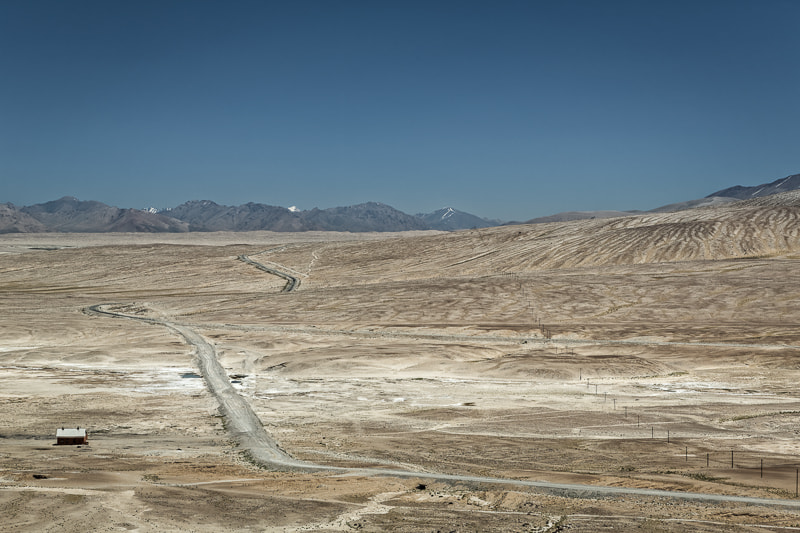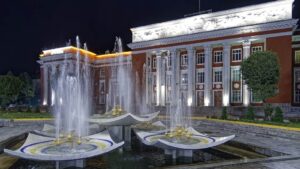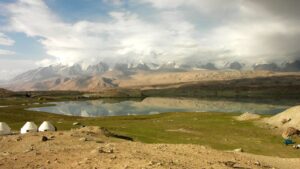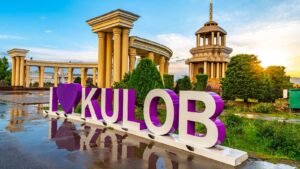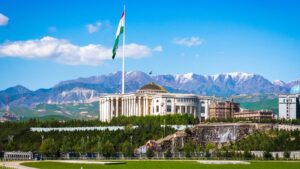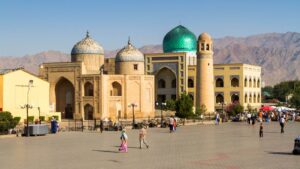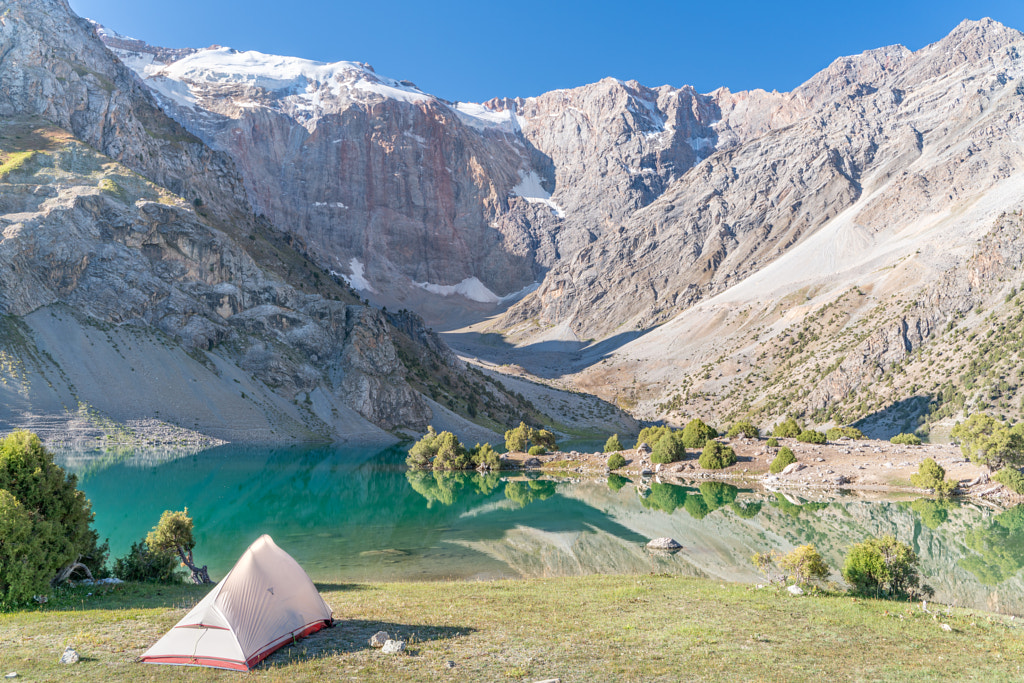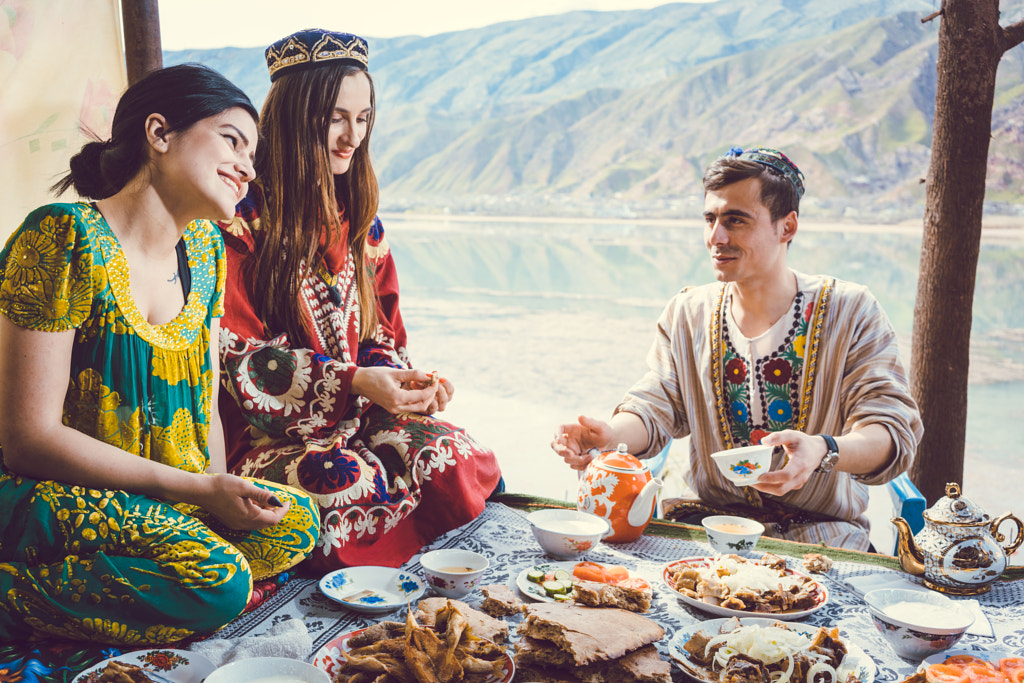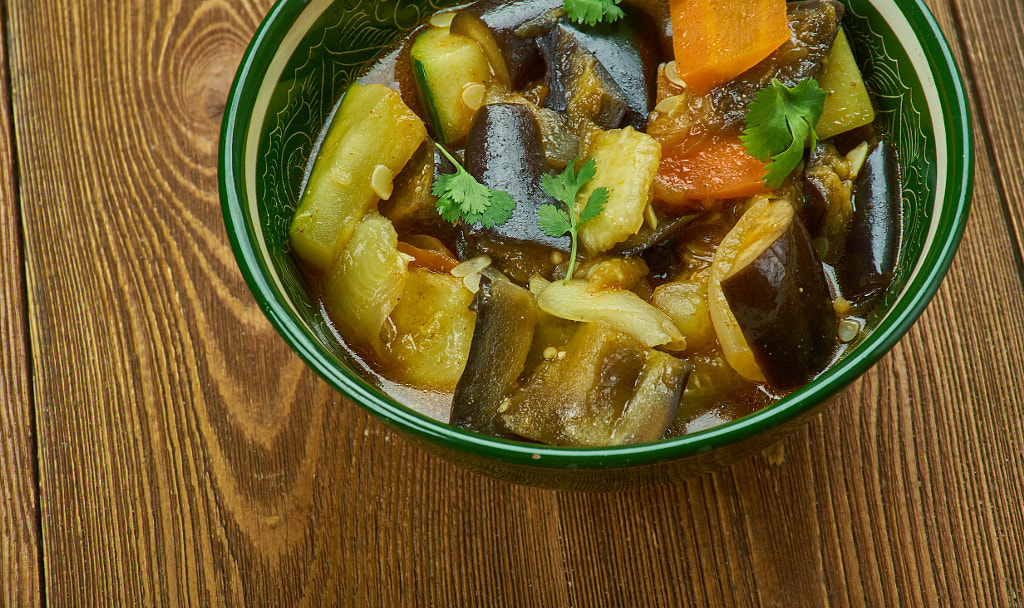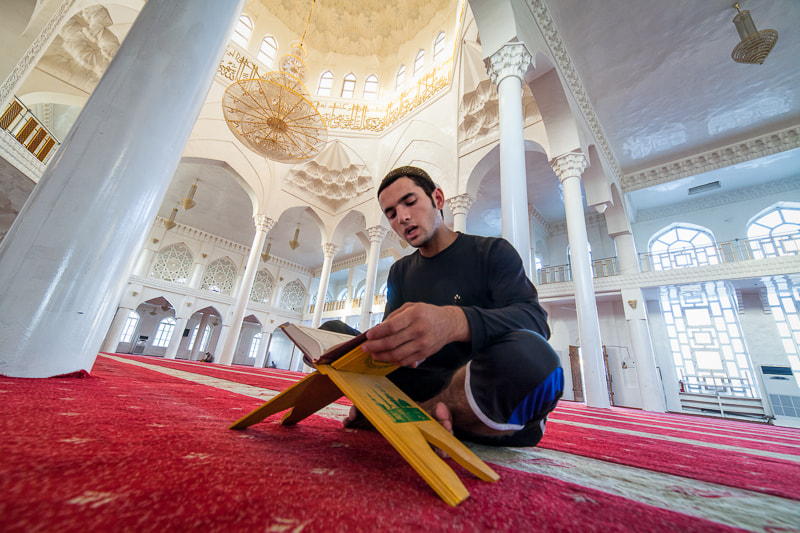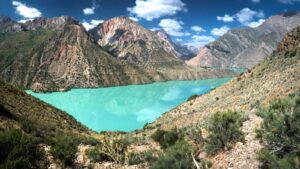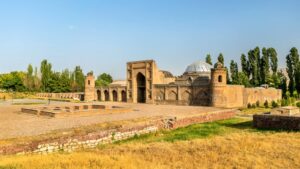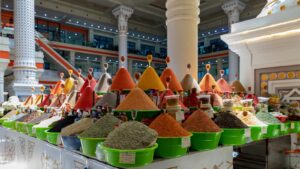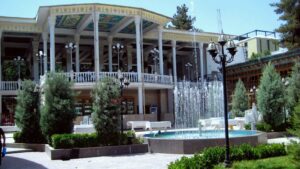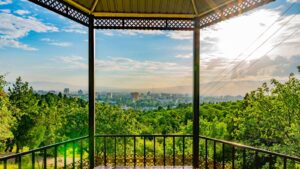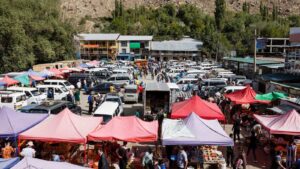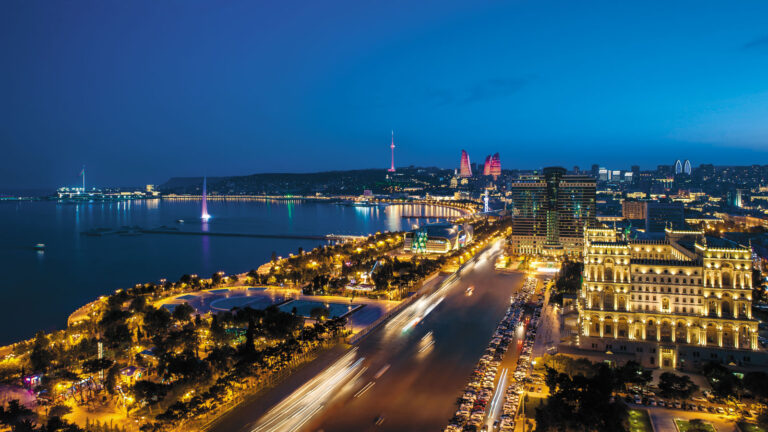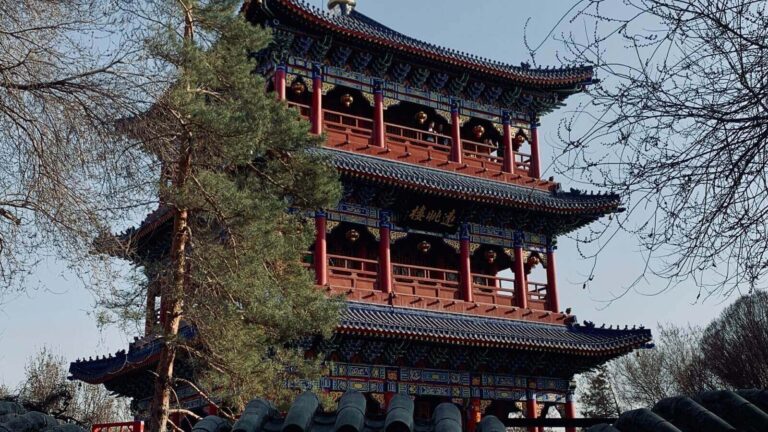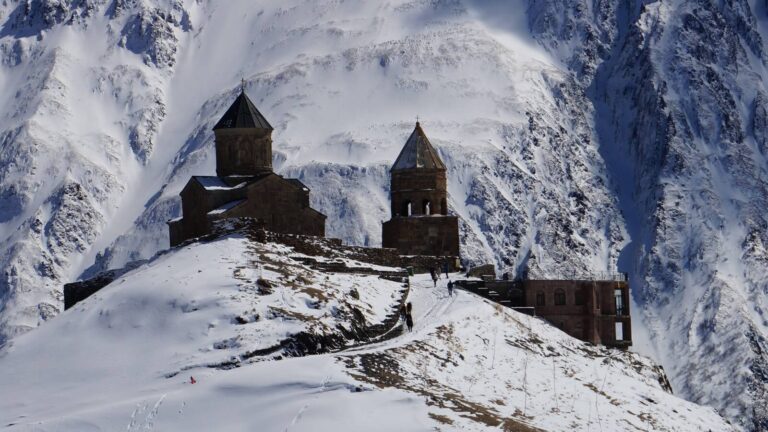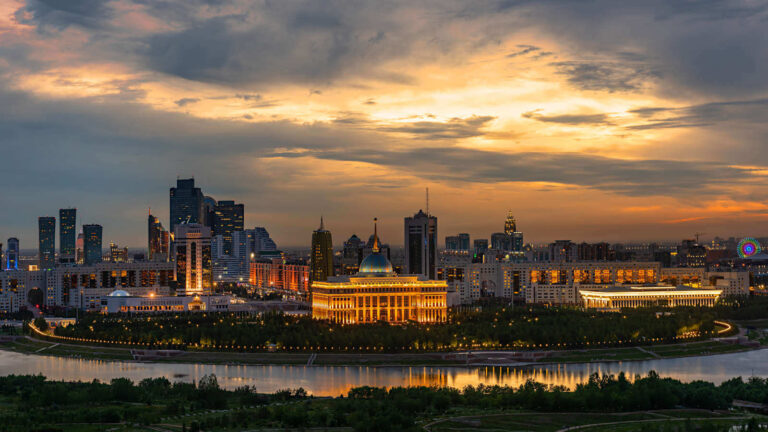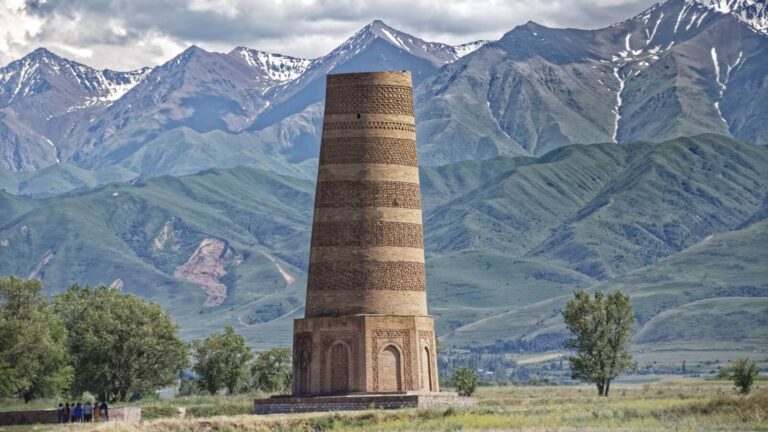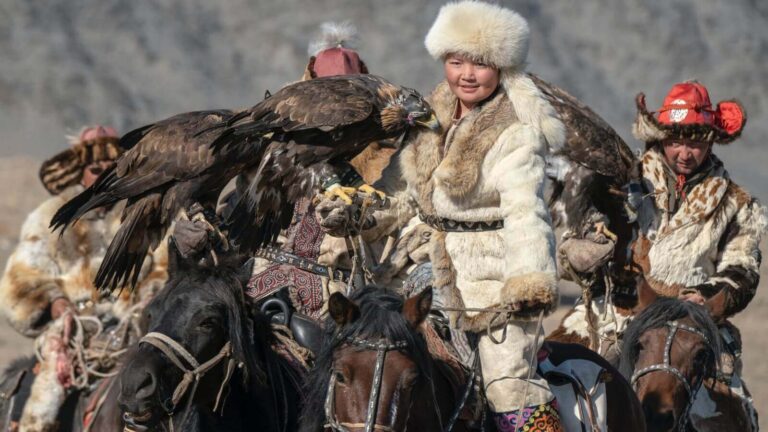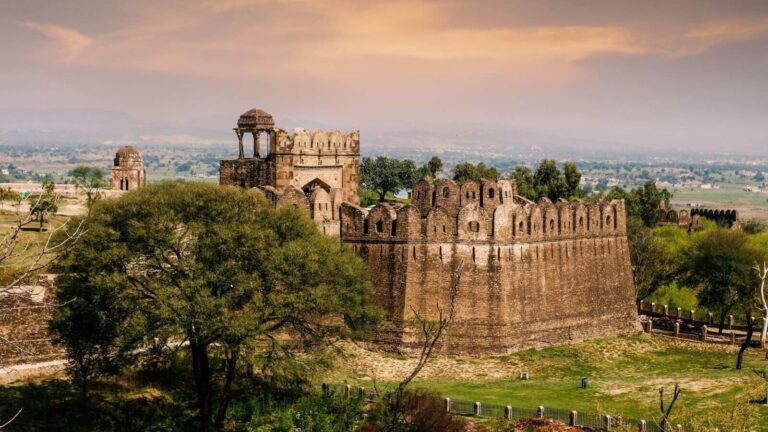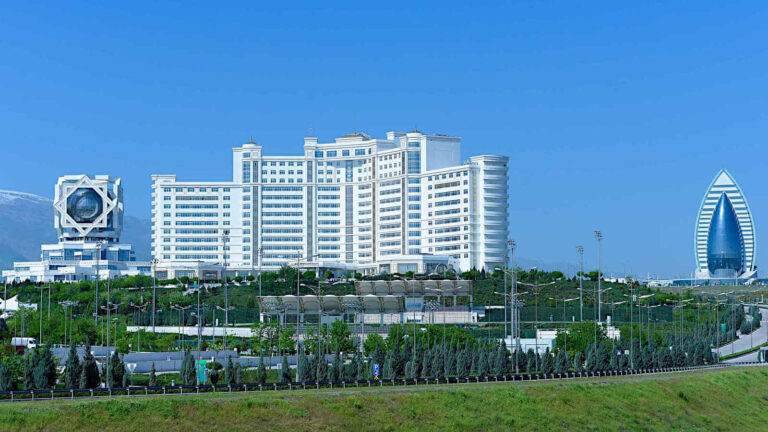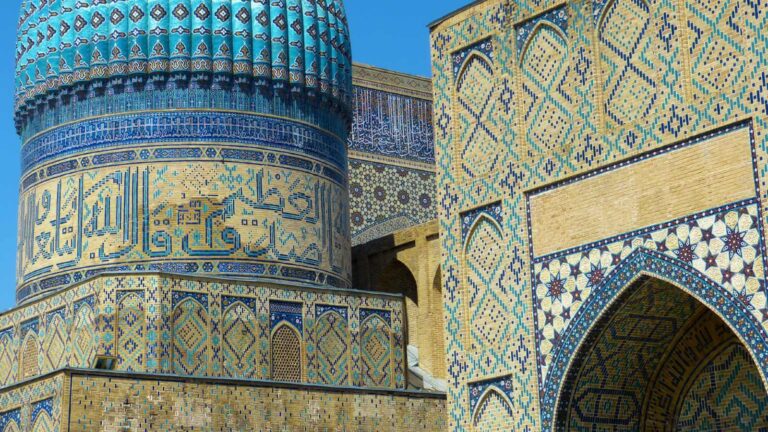Tajikistan is officially a republic, and holds elections for the presidency and parliament, operating under a presidential system.
Tajikistan is located in the heart of Central Asia. The country’s territory covers 142.6 square kilometers. Mountains with an average elevation of more than 3000 meters above sea level cover 93% of the area. It shares borders with the Republic of Uzbekistan and the Kirgiz Republic to the west and north, the People’s Republic of China to the east, and Afghanistan to the south.
Tajikistan has typically been positioned in global source markets as a destination along the Central Asian Silk Road. Tajikistan’s unique selling point (USP) in the context of the region is its mountainous terrain, combined with its pristine environment, mountain culture, including flora and fauna, and cultural heritage.

Language: Tajik
Currency: Somoni
Capital City: Dushanbe
Population: 10 million
History
The modern history of this mountainous and hospitable country dates back to October 16, 1929, when the Tajik Soviet Socialist Republic was formed. Tajikistan is centrally located in the inner part of the vast continental massif of Eurasia. The capital, Dushanbe, until 1961 was called Stalinabad, before reverting back to its historical name of Dushanbe, which means “Monday” in Tajik. Tajikistan received its independence from the Soviet Union in 1991.
Before the Soviet era, the Republic of Tajikistan experienced population changes that brought political and cultural influences from Asia and the Middle East. The conquests of Alexander the Great in the fourth century B.C.E. , led to the founding of Khujand and Panjakent. Under the Sassanians (third century C.E. ), the Persian language and culture and the Zoroastrian religion spread throughout the region. Conversion to Islam began in the seventh century. By the ninth century, it was the prevalent religion.
After the Uzbeki nomadic tribes conquered Central Asia, the future Tajikistan was divided into three states: the Uzbek-ruled Bukhara Khanate, the Kokand Khanate, in the Fergana Valley, and the kingdom of Afghanistan. These states lasted until the nineteenth century, when they were gradually overtaken by traders and settlers from the Russian Empire. In 1925, Tajikistan became an autonomous republic within Uzbekistan. In 1929, it was detached from Uzbekistan and given full status as a republic.
The current Tajik Republic harkens to the Samanid Empire (AD 875-999). The Tajik people came under Russian rule in the 1860. Tajikistan became an autonomous Soviet socialist republic within Uzbekistan in 1924; “Basmachi” resistance in the wake of the Russian Revolution of 1917 was quelled in 1925, and Tajikistan became one of the component Soviet socialist republics in 1929 called Tadzhik SSR from 1936 to 1991.
Tajikistan gained independence in 1991, and has experienced three changes in government and a civil war since then. A peace agreement among rival factions was signed in 1997 but its implementation has progressed.
Geography and Nature
The territory of Tajikistan occupies 142 000 km² , with a dramatic topography and relief, stretching for 700km from west to east and 350km from north to south. With elevation changes from 300 to 7495m throughout the country, Tajikistan shares borders with the Republic of Uzbekistan and the Kirgiz Republic to the west and north, the People’s Republic of China to the east, and Afghanistan to the south.
Tajikistan’s biodiversity is rich enough. According to recent data, over 13,000 animal species and 4,500 varieties of floral vegetation have been identified. More than 80% of the country’s existing biodiversity is found in Tajikistan’s mountain ecosystems. The livelihoods of over 70% of Tajikistan’s population are dependent on the use of country’s natural resources.
In Tajikistan, special protected natural areas cover 22% of the territory. These areas include four reserves, encompassing 1734 square kilometers; 13 reserves; 24 farms for hunting and fishing; and three parks, including the Tajik National Park (26,000 square kilometers), the Shirkent Natural-Historical Park, and the Sari-Khosor Natural Park Parks and nature reserves’ unique ecosystems, landscapes, and habitats are well preserved at the “Zorkul,” “Romit”, “Mozkul,” “Dashti Jum,” Zarafshon, “Iskandarkul”, “Nurek, “Childukhtaron,” “Sangvor,” “Mozkul,” “Oktash,” and “Karatau” and areas of Tajik National Park. The markhor goat (Capra falconeri), mountain argali (Marco Polo), the Bukhara mountain sheep (Urial), Bukhara deer (Cervus hanglubactrianus), the snow leopard (Panthera uncia), Tian Shan brown bear, Ursus arctos isabellinus, the striped hyena (Hyaena hyaena), andThe bar-headed goose (Anser indicus) are just a few of the rare, endangered species of animals that have been protected.
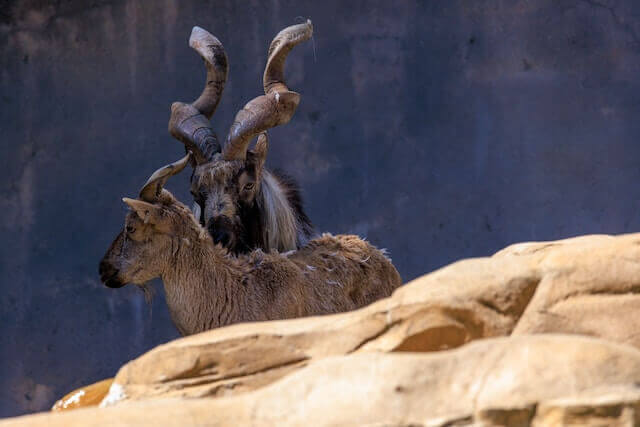
Thanks to its complex mountain relief, there are still many areas of Tajikistan that are untouched by civilization. Thus, mountain tours in Tajikistan will allow you to enjoy real, wild natural habitats.
Economy
Tajikistan is an agro-industrial country with rich mineral resources. At present, more than 400 deposits have been discovered. More than 100 are actively mined producing up to 40 types of mineral raw materials, both fuel and ore minerals. In terms of coal reserves, Tajikistan occupies a leading position in Central Asia (up to 4 billion tons of geological reserves). There are also many deposits of zinc, lead, bismuth, molybdenum, tungsten, gold, antimony, mercury, fluorspar, as well as natural gas and oil.
The country’s main exports are aluminum, electricity, cotton, agricultural products, with the highest grossing areas of mining, electricity and tourism. Of the jewelry and ornamental stones, turquoise, lapis lazuli, amethyst, rauchtopaz, rock and crystals are of practical importance; precious stones include topaz, rubellite, polychrome tourmaline, aquamarine, garnet, ruby, etc., all which can be purchased in the jewlery shops throughout the country.
Considering the enormous potential of the resources following the areas of agriculture and energy, Tajikistan views tourism to be one of its main economic priorities. As a fastest growing industry tourism offers great opportunities for emerging economies and developing countries. It creates
jobs, strengthens the local economy, contributes to local infrastructure development and can help to conserve the natural environment and cultural assets and traditions.
To encourage investment in the tourism industry, the government adopted regulations in 2017 exempting registered enterprises for 5 years from corporate income tax as well as exempting all imported equipment and supplies from value added tax.
The government of Tajikistan’s tourist policy framework shows a strong desire to develop the industry and support it through the legislative process.
People and Culture
The mountains of Tajikistan are famous for their hospitable inhabitants. It is customary for them to invite visitors to their home for tea, and even to stay with them overnight. On the days of the spring holiday of Navruz, such invitations can be extended up to ten guests at a time, with a large feast in any teahouse completely free of charge. The culture of Tajikistan has centuries-old and strong ties with Iran and Uzbekistan, as well as with the Pamirs and Russia, and is a unique symbiosis of the traditions of the peoples living on the territory of the republic.
The Tajik identity and culture dates back several thousand years, and tajik language belongs to
the Western Iranian language group. Muslim people make up the large majority of the population, which has influenced several aspects of culture, including art, food, music, and festivals. The Tajik people are regarded for being hospitable, friendly, and family-oriented.
Across the country, there is still a vibrant lasting impression of folk art, particularly in the production of textiles, embroidery, and other functional decorative arts like carving, furniture, and jewelry.
Important Dates
- 1 January: New Year’s Day
- 8 March: International Women’s Day
- 21–23 March: Navruz (can change slightly each year)
- 1 May: International Labour Day
- 9 May: Victory Day
- 27 June: National Unity Day
- 9 September: Independence Day
- 6 November: Constitution Day
You can reach Tajikistan by plane, take a train, international buses, and those who prefer extreme travel can travel by car, motorbike and even hitchhiking.
By Plane
Tajikistan’s national carrier Somon Air offers flights to Dushanbe International Airport from Jeddah (JED), Istanbul (IST), Trabzon (TZX) and Dubai (DXB). Turkish Airlines flies to Dushanbe from Istanbul (IST). Flydubai offers year-round flights from Dubai (DXB). Azerbaijan International Airlines offers seasonal flights from Baku (GYD). Jazeera Airways also provides seasonal flights from Kuwait City (KWI).
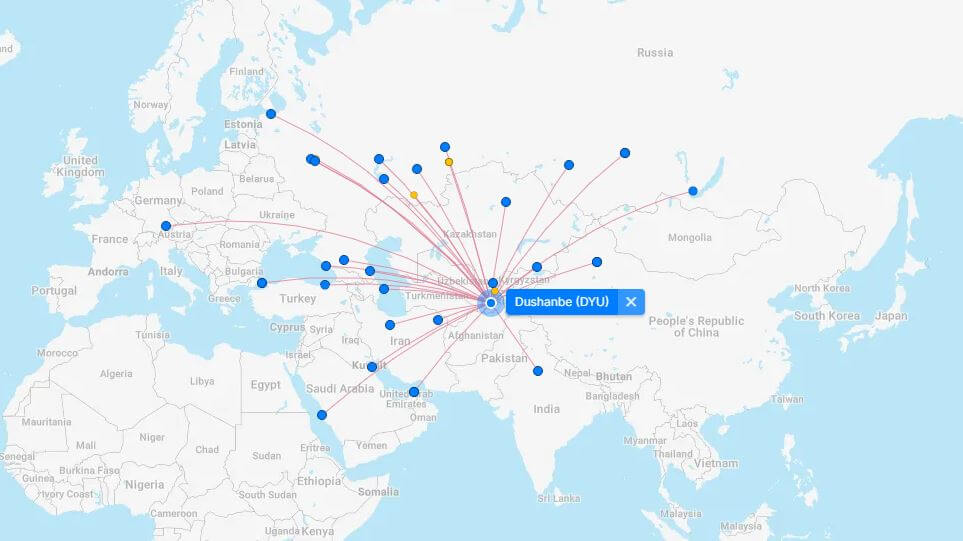
Three airports serve International flights:
- Dushanbe International Airport (+992 372 27 2179). Somon Air and Tajik Air are the only two domestic airlines. Dushanbe Airport also includes other International airlines such as Kazakh Air Astana, China’s Southern Airlines; Turkish Airlines; UAE Flydubai; Uzbekistan’ Ozbekistan Havo Yollari.
- Khujand Airport (+992 3422 6 6588). The second largest city in Tajikistan, Khujand Aiport has international flights operated by China’s Southern Airlines from Urumqi; Turkish Airlines from Istanbul; and Russian Sever carriers.
- Kulob Airport (+992 48 703 5304). Serves the Khatlon region. Various Russian airlines regularly land at the airport.
By Train
Railway stations are the second mode of transportation and port of entry to the republic. Tajikistan’s railways have 480km of broad gauge tracks, connecting the main urban centres of the western part of the country with points in neighbouring Uzbekistan and Turkmenistan. In 2000, a new line was added that connects the southern cities of the country, notably Kulyab and Bokhtar. It’s also possible to also get to Dushanbe by commuter train from Gissar.
By Car
The other way to enter the country is by car through international border checkpoints of Tajikistan with a border pass.
From Uzbekistan, one can enter through the Dusti Sariosiyo checkpoint (Tursunzade district), Fatehabad-Oybek (Mastchoh district, Sughd region), Patar-Andarkhon (Kanibadam district, Sughd region), Sarazm-Jartepa (Panjakent district, Sughd region), Aivaj Gulbahor (Shakhritus region, Khatlon region), Patar-Andarkhan (Kanibadam city, Sughd region), Ravot-Ravat (Kanibadam region, Sughd region), Khashtyak-Bekabad (Spitamen region, Sughd region), Navbunyod-Pap (Asht region, Sughd region).
Through the Kyrgyz-Tajik checkpoint: Kizil-Art-Bor Dobo (Murgab district), Guliston-Kyzyl-Bel (Isfara district, Sughd region), Ovchi-kalacha-Kulundu (B. Gafurov district, Sughd region), Kairagach-Border in district of Laylak district, Karamyk (Lakhsh district).
Through the Afghan-Tajik checkpoint: Ishkashim-Sultan (Ishkashim district, GBAO), Nizhny Panj-Sherkhan Bandar (Qumsangir district, Khatlon region), Ruzvay-Nusai (Darvaz district, GBAO).
Through the Chinese-Tajik checkpoint: Kulma-Karasu (Murgab district, GBAO).
By Bus
From Tajikistan’s Khujand and Panjakent it is also possible to take buses to Tashkent and Samarkand in Uzbekistan. The trips are operated by Asian Express, a Tajik bus company (Abuali Ibn Sino Avenue 110, Dushanbe 734062).
The climate in the republic is subtropical and sharply continental. Winters in the valleys are mild, summers are hot and dry. One of the decisive roles in climate variation is played by the mountain systems of the Hindu Kush, the Pamirs and the ranges in the north which lead to the formation of peculiar local types of climate due to the complexity of the relief and the high altitude of the mountain systems.
A special role in the climate of Tajikistan is played by the sun, which shines in the republic during the year from 2097 to 3166 hours, rising above the horizon on the days of the winter solstice to 28˚, and on the days of the summer – up to 75˚. January is considered the coldest month in the plains and foothills with average temperature ranging from +2˚ to -2˚C, while the average temperature of the hottest month, July, exceeds +31˚С in the south and in the flat part of the republic, and drops up to +10˚С in the highlands.
TAJIKISTAN WEATHERDiscover Tajikistan’s best Destinations on each Season
The visa application process is straightforward: it can be applied online (https://www.evisa.tj) and It is valid for 90 days. It allows a foreign citizen to stay in Tajikistan for no more than 60 calendar days (with the exception of force majeure situations). If you have an e-visa, you can enter Tajikistan through ground checkpoints or through any airport or train station.
To visit Lake Sarez, a permit is required, which can be obtained from the Tajik emergency committee. A permit is also required to visit the Tajik National Park, which can be obtained from park itself. To visit the Pamirs, in addition to a visa, a foreign visitor must obtain a permit, which is issued together with a visa at the Tajik embassies abroad or can be obtained at the local passport service in Dushanbe, or online at www.evisa.tj
To visit Tajikistan It is necessary to possess medical insurance. Check update Health information on www.moh.tj
In Tajikistan’s larger cities, navigating through public transport is straightforward, with buses and marshrutkas (white vans) serving most areas.
To drive a car in Tajikistan, a foreign visitor must have a valid driving license from the country of origin, and register it with the Tajik traffic police. The vehicle must have a registration certificate issued by the Tajik traffic police.
Foreign drivers must obey the rules of the road in large cities where there is a “Smart City” tracking system. In some rural areas, due to poor road infrastructure, it is preferable to drive an SUV at medium speed.
Main Regions of Tajikistan
Intercity buses and suburban trains run between cities, especially in the south-west of the country. Domestic airlines connect major urban areas. A fairly large number of the population of Tajikistan rides bicycles, with electric scooters gaining popularity. Taxis are readily available in all urban areas.
Due to rugged terrain and limited funding, train travel in Tajikistan is not popular. Tajikistan has two separate railway networks, with no connection between them.
Phone: The telephone code is +992. Dushanbe code – +37. Time zone – GMT +05:00 (no daylight saving time).
Electricity: The voltage in the electrical network is 220 watts.
Communications: The main provider of fixed telephone services is the state-owned telecommunications operator Tajiktelecom, which also provides provider services under the brand name of its subsidiary TojNet. In addition to it, there are a number of other providers – Babilon-T, which is also a cellular operator, Intercom, Telecom Technology, Saturn Online, Eastera. Cellular operators provide their services under the brands Tcell, Z-Mobile, Babilon-M, MegaFon, O Mobile.
A local sim card can be obtained upon arrival or at the office of a local mobile operator using a foreign passport. Its validity period will be 10 days from the date of entry into Tajikistan, that is, during the period of stay of a foreigner without temporary registration. If the subscriber has not contacted the office of the mobile operator again, his SIM card will be automatically disabled.
Wi-Fi: Wi-Fi areas can be found in some coffee places in Dushanbe and Khujand, at the hotels/guest-houses in Dushanbe, Khujand, Kulob, and Khorog. Find free Wi-Fi spots in Dushanbe in https://www.wifimap.io/2838-dushanbe-free-wifi/map
Tajikistan has a wide choice of accommodations for tourists: hotels, hostels, guest houses and apartments. Hotels in Tajikistan accept tourists all year round. Budget accommodation options include hostels: Green House Hostel, Doshan Hostel, Hello Dushanbe Hostel, Yeti Hostel Dushanbe, City Hostel and others.
Local Lodging
Recent years have seen the development of community-based tourism (CBT) in Tajikistan, and this is a huge boon to travellers in the Fann and Zarafshon mountains and in the Pamirs. Not only are homestays affordable (usually US$10–15 per person plus meals) but they give you the opportunity to see inside a Tajik home, meet a family and fill up on home-cooked food.
Camping
If you wish to put up a tent on private land you will need to ask the owner and will usually be expected to pay a few dollars for the privilege. If you are trekking with local tour operators, they will often provide camping equipment for you, otherwise you will have to bring everything you need with you from home. Reasonable quality tents and sleeping bags are not available to buy locally.
The gastronomic map of Tajikistan is quite diverse and represented by both local (traditional teahouses) and foreign cuisine such as Iranian, Turkish, Italian and Chinese.
Traditional Tajik meals begin with sweet dishes such as halwa and tea, and then progress to soups and meat, before finishing with a pilaf. The Tajik national dish is kabuli pulao, a rice dish with shredded yellow turnip or carrot, meat, and olive oil or drippings.
Soup often is served as a main dish. It may contain a soup bone with meat, carrots, onions, and potatoes. Osh, a pilaf-like rice dish made with carrots, onions and meat, is served two or three times a week. At other times pasta, meat- and onion-filled pastries, and tomato and cucumber salads may be served. All meals are accompanied with large rounds of flat bread.
Traditional Tajik round bread is similar to round bread consumed throughout Central Asia. It is made from flours of wheat, barley, corn and beans. Among the other common foods are porridge, milk noodle flakes, milk paste, butter tea wheat paste, butter tea milk paste, butter tea, highland barley bread, butter tea sprinkled on bread, finger meat, finger rice, cheese, dried milk and milk tea.
Central Asian Dishes include shashkyl (kebabs, often made with mutton and served with ananas and bread), plov (pilaf-style rice mixed with meat, onions and carrots and other things), manti (steamed lamb dumplings, often served with minted sour cream), laghman (Chinese-style noodles), kesme (a stewlike noodle soup with potatoes, vegetables and meat), jarkop (braised meat and vegetables with noodles), hoshan (dumplings similar to manti), moshkichiri (bean and meat soup), dimlama (braised meat, potatoes, onions), sheep fat, mutton and various parts of the sheep.
In Tajikistan, many people eat nahud sambusa (chickpea samsas), nahud shavla (porridge), bean and milk soups, siyo halav (herb soup), tuhum barak (egg-filled ravioli covered with sesame seed oil) and chakka (curd mixed with herbs). You can also get besbarmak (large Kyrgyz-style, flat noodles topped by mutton or beef ), sweet plov with raisins, apricots or prunes or with pumpkin, zhuta (pasta with a carrot and pumpkin filling), shurpa (chickpea soup), hunon (noodle roll filled with meat ), samsa (deep-fried pastries filled with meat and vegetables) and cabbage or grape leaves stuffed with tomatoes and pears and meat, onion soup, pickled tomatoes, cucumbers .
A typical meal in Tajikistan consists non (local flat bread), salad, soup, potatoes and sour cream or milk. There is a wide variety of breads: leavened and unleavened. Some are sprinkled with things like sesame, nutmeg, poppy seeds or raisins. A wide variety of milk products from sheep, cows, goats, horses and camels are available. These include cheeses, yoghurt, cottage cheese, aryan (yoghurt drink), curd (salty dried balls), and kaimak (sweet cream skimmed from fresh milk).
Currency and Exchange Rates
The unit of currency in Tajikistan is the Tajik somoni (TJS). It is subdivided into 100 dirams. Notes are printed in denominations of one, three, five, ten, 20, 50, 100, 200 and 500 somoni with coins of five, ten, 20 and 50 dirhams. You may occasionally get one-, three- and five- somoni coins. Get live exchange rates here.
Both US dollar and Euro are widely accepted in Tajikistan. However it is highly recommended to change foreign currency into Tajik Somoni at the banks or exchange offices in the cities.
There are ATM’s in Dushanbe, Penjikent, Khujand, Khorog, Isfara, Istaravshan, and Qurghon-Teppa which accept Visa. MasterCard only works at Kazkom ATMs, present in Khujand and Dushanbe, for instance in the Sheraton Hotel. In order to avoid money stress, it is highly recommended to have some cash on hand while arriving in Tajikistan.
Credit Cards and Money Transfers
Tajikistan is a cash economy. Paying by credit card or travellers’ cheque will be possible only in some bars, restaurants and large supermarkets.
Business hours
Bank are open from 8:30 until 16:30 on weekdays, and on Saturdays from 8:30 untill noon. They are closed on Sundays.
Traditional Tajik families are very large and sometimes have up to 10 children. On average, each family usually has 4-5 children. Kinship relations are quite strong and numerous, hence high touch wedding ceremonies, and the joint celebration of other holidays.
Dressing
Traditional Tajik clothing is very popular in the republic: for women, it is a dress in the national style, trousers (izors) for it in the same style and a headscarf. Recently, the national Tajik costume has been influenced by Arab design and traditions. Men wear a shirt with an ornament and harem pants. Unlike women, Tajik men wear national clothes on holidays, with the exception of residents in rural areas. The rest of the time, their clothing style is closer to European.
Etiquette
The people of Tajikistan are generally very courteous, friendly and hospitable. From time immemorial people treated with respect and veneration to their customs and traditions and passed them from generation to generation. There are some basic rules of etiquette:
- Always take off your shoes when entering a house, apartment or yurt.
- Don’t put your feet on the tablecloth. Do not step across the tablecloth if you are seated on the floor, go round it.
- Even if food is unappetizing, take at least a symbolic bite.
- It is offensive to blow your nose into your handkerchief.
- It is not recommended to wear shorts (including men), miniskirts or skimpy tops.
- For women it is useful to carry a small headscarf for visiting holy places.
Singing and Dancing
National songs take pride of place among the Tajik people. Their folk instruments still delight guests of wedding ceremonies and other celebrations. For instance, Dutor and tanbur, karnay and chang, rubob and nai, tablak and doira. Tajik dance has its origins from the time of the Middle Ages, accompanying joyful and sad events in the life of the Tajik people.
Tipping
Tipping isn’t standard in Tajikistan, however, those in services that cater toward tourists like guides and drivers will likely expect a tip of 10%.
Religion
The religion of the vast majority of Tajikistan’s population is Sunni Islam. In the Pamirs, however, a majority of the people profess the Ismaili faith, a branch of Shia Islam that considers Ismail, the eldest son of the Shia Imam Jafar al-Sadiq – d.765 – as his successor; the spiritual leader of the Ismaili community is the Aga Khan, the 49th Imam of the community since the time of Ali.
Smoking and Alcohol
The new anti-smoking law lists places where smoking is prohibited. These are offices, cafes, restaurants, bars, catering points, parks. In Dushanbe, some cafes and restaurants have specially designated smoking rooms. Drinking alcohol in public is illegal. It’s illegal to drive with a blood alcohol level above zero.
Video and Photography
Be careful when taking photos. It’s illegal to photograph sensitive sites, including transport facilities, government buildings and military zones, assets and personnel.
Drone use is allowed in Tajikistan. However before travelling to the country it is important to check the situation with a local tour company / tourist information center whether any permits are required for drone usage.
Tajikistan is a very safe country. Russian remains the international language in Central Asia, with very few people speaking English.
Road Safety
The condition of roads in and around Dushanbe is generally good, and there are modern highways north to Sughd and south through Khatlon.
If you are driving in Tajikistan, you will need to display care and caution, always wear a seat belt, and never drink and drive. Try to avoid driving outside cities after dark, as roads are poorly lit and other vehicles may not have working lights. Bad driving also creates a risk to pedestrians.
When hiring a car or getting into a taxi, you should check the vehicle is roadworthy, especially before embarking on longer journeys. Remain alert throughout the journey and do not be afraid to ask the driver to slow down or stop using a mobile phone if you are anxious. Generally, drivers are keen to put their passengers at ease.
When on foot you should avoid the local practice of crossing roads by walking out to the center of the road and waiting for a gap in the oncoming traffic, even if this means taking a detour to cross the road at the next set of traffic lights. Do not expect cars to stop for you, even if you are on a zebra crossing.
In case of Emergency
Ambulance: 103
Police: 102
Tourist Police: (+992) 231 8036, (+992) 93 922-78-60
www.touristpolice.tj
Websites
- National Tourism Website: www.traveltajikistan.tj
- Ministry of health and social protection of the population of the Republic of Tajikistan: www.moh.tj
- Ministry of foreign affairs: www.mfa.tj
Tourism Information Centers
Dushanbe
- Telephone: (+992) 918333807
- Email: [email protected]
- Website: tourism.tj
Khorog
- Email: [email protected]
- Telephone: (+992) 934425555
- Website: visitpamirs.org

